All about cold batik
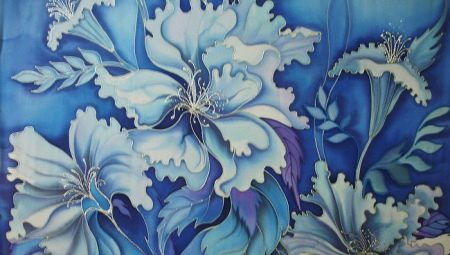
Art, which began to develop together with humanity itself, underwent various metamorphoses: its meanings, principles, technologies changed. When a person in ancient times applied some kind of pattern to wood, clay, fabric, this not only served aesthetic ideals - the action had a sacred meaning. Many artistic techniques have their roots in paganism. Each flower, curl, geometric figure had its own meaning and was not accidental. Batik, being the art of painting on fabric, also follows this concept.
What it is?
The word "batik" itself has Indonesian roots, and if you translate it literally, you get "a drop of wax". The peculiarities of drawing a pattern on the fabric gave rise to this name. To prevent paints from spreading over matter, the masters learned to fix colors using special compounds, the main component of which was wax.
Batik can be hot or cold. The hot painting technique involves warming up paints and wax before applying it to the fabric; cold batik does not need to be melted beforehand. If hot batik appeared a long time ago, then cold batik appeared with the development of chemical production. It works special chemical reserve compositionwhich resembles a gel that can harden on fabric. Since this composition contains gasoline and glue, it is unsafe to cook it at home, to put it mildly.
In a sense, cold technique is easier to perform and requires a little less effort.
It is believed that the technique of cold batik is more suitable for novice craftsmen, since they are not afraid of a wide range of work, actions with high temperatures and unexpected behavior of compositions.


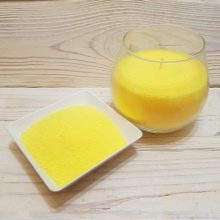
History of origin
The homeland of batik is Indonesia.In those distant times, when this art was just in its infancy, women were already trying in every possible way to decorate their own outfits. To emphasize their belonging to a particular genus, it was necessary to decorate clothes with a certain pattern and color scheme.
And although the choice of dyes was quite limited, the craftsmen successfully created colorful canvases. I must say that each genus kept its secrets about how it was possible to achieve this or that color, how an interesting pattern was obtained. The peculiarities of craftsmanship were passed on from the elders to the younger generations. The drawings were very different - ornaments, abstract and plot stories.
The advancement of art implies two paths: in depth and breadth, to put it very simply. This means that the techniques have become more complicated, and the technologies have become more and more perfect - this is a deeper advance. And in breadth is an expansion of scale. From Indonesia, the art of batik passed to Japan and China, where it acquired a new development. China made a great contribution to the promotion of batik - it gave silk to the art of painting on fabric, and this combination remains relevant to this day.


The Japanese came up with the so-called reverse batikwhen the fabric was first dyed and then bleached with alkali. Dutch travelers brought batik to Europe, which could give this direction another round of development, but the very existence of the art of painting on fabric almost ceased to exist. The Europeans quickly got fed up with batik and got carried away by the English printing technique. But single handicraftsmen were able to preserve the unique art of decorating canvases.
Today batik is not only a hot technique, more in demand, improved over the centuries, but also a cold technique that really developed during the growth of the chemical industry.
Batik acquires new directions, it mixes with other techniques and styles, it lives!
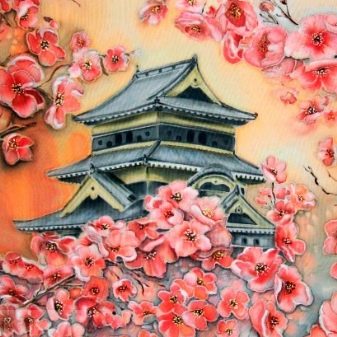
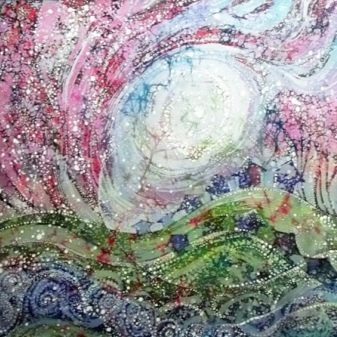
Tools and materials
It's worth starting with the fabric. Batik always maximizes its capabilities when it comes to working on natural fabric. If you are a beginner then start with cambric, crepe de Chine, calico... When your hand is already full, you can try your hand on crepe georgette, toilets and crepe chiffon... If you really want to touch the art of painting on silk, then working with natural materials is even more responsible, but more pleasant, while artificial silk is very inconvenient.
Attention! The fabric should be washed, ironed and rinsed before starting work.
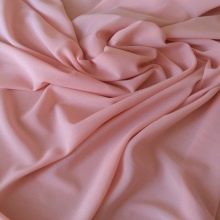
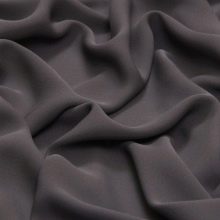
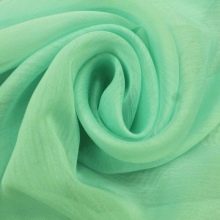
What you need to know about stretchers.
- Stretcher - this is the frame on which the fabric is pulled to make it easier to work with. If a painting is supposed to be small, you can replace the stretcher hoop.
- Medium and large works it is preferable to perform on stretchers made of soft wood, while the buttons for securing the material should easily enter them.
- More convenient sliding stretcher, it does not take up much space and is a versatile device. The structure consists of four rails connected to each other, and the dimensions of the subframe can be adjusted to the size of the job.
- Before stretching, it makes sense to glue the stretcher with masking tape. - this will save him from spreading paint.
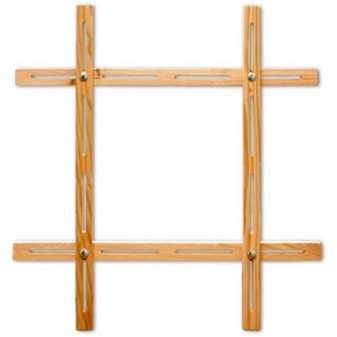
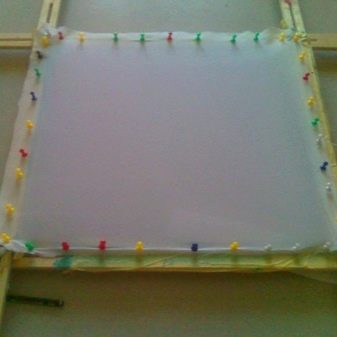
The main tool is a glass tube that serves to apply the reserve. It consists of three parts: a long part, a spherical and curved nose. The tube is very fragile, it must be protected and washed after each work with any solvent. If a cork of a dried reserving compound has formed inside, you need to very delicately clean the curved nose with a wire.
There are two types of batik paints: thermo-set and steam-set. Many professionals prefer to work with paints that require precisely heat treatment, that is, ironing them with a hot iron. Contours and paints for batik today are produced under the brands Decola, Gamma, Gutta Are decent materials for batik.
The reserve is an adhesive semi-liquid component that delimits the stained areas on the tissue. There is a transparent reserve, which is then washed off with warm water, and there is a reserve, which does not need to be washed off: it is fixed on the fabric and becomes part of the work.
The painting itself is performed brusheswhich can be made from synthetic fibers or natural squirrel hair, pony, column. After use, be sure to rinse them in warm soapy water. You can also use sponges.
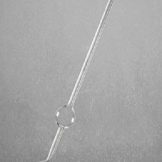

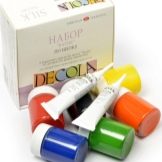
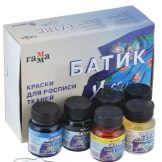
Execution technique
The basic principle of cold batik is that first you choose a pattern that can be easily divided into closed, well-defined areas of a certain color. Usually, beginners begin to make batik using drawings from children's coloring pages: it’s probably not easier and more convenient to come up with.
Further, the step-by-step algorithm looks like this.
- The drawing is to be transferred to the fabric, for which craftsmen use a special fabric pencil or a disappearing marker. The drawing must be fixed under the fabric, outline the contours.
- The fabric is fixed to the frame, you need to pull the matter tight.
- The reserve is applied to the fabric. The glass tube is filled with a reserve, its contour must strictly follow the template. Each color must be closed - this is a mandatory requirement. Then wait until the reserve is dry, for the speed of the process, the fabric can be dried with a hairdryer.
- Before filling the paths, check that they are closed. Take a sponge soaked in clean water (you can add a drop of shampoo to the water), blot the desired area. If the water does not come out of the contour, then everything is done correctly.
- Application of dyes occurs with a brush or cotton sponge, the application methods are the same in both cases. And to ensure the paint even spreading, the pouring area should be soaked with water.
- The painting dries upand then you remove it from the frame. Sometimes it becomes necessary to correct certain areas. See exactly how the dyes are fixed, usually this is indicated in the instructions for them. Some paints are fixed with an iron, others - with steam, a hairdryer, or even the action of high temperatures in the oven.
After passing all the stages, the work can be considered completed. It remains only to find a place where it will be located and please others. Although, there is one more thing - decor.
Many batik lovers like to decorate their finished work.
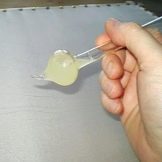


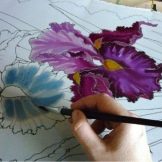
Decor options
One of the most popular design options are rhinestones... The very outline that separated one area from another can be decorated with shiny pebbles. It looks beautiful if the decoration echoes the theme. For example, you paint on a fabric night in the forest, a noble wolf, snow and spruce, constellations in the sky. Of course, in this case, rhinestones are appropriate.
For strong adhesion to the fabric, they are glued with a hot iron. Sometimes there are small holes in rhinestones and this means that they can be sewn on.
For the purpose of decoration, someone likes more stitch the contour. For this, silver metallized threads or ordinary floss are taken, and the contours of the elements are stitched with satin stitch. It is difficult and time-consuming work, but the results can be impressive. In this case, it will no longer be a pure batik, but a mixed technique of its execution.
And yet, in most cases, batik is good in itself in its subtlety, grace, painstaking work and wonderful result. Handicraft, popular at all times, is capable of succumbing to anyone who wants to master it. Good luck with your work and inspiration!
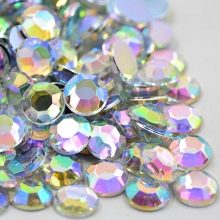
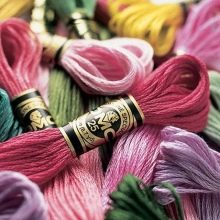

For what cold batik is, see the next video.








